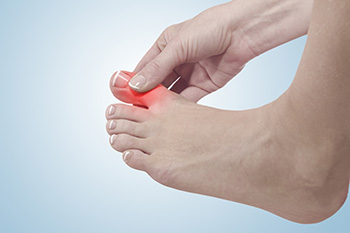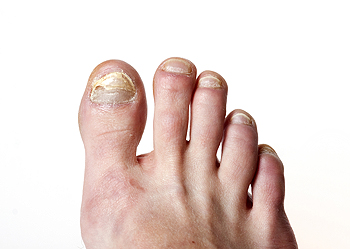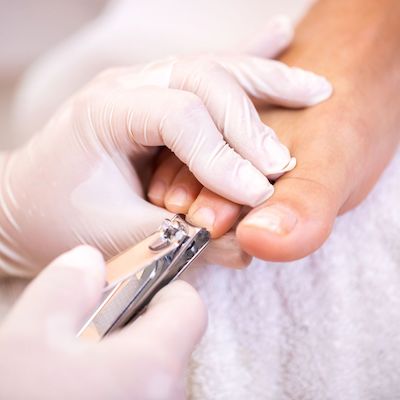Columbus: (614) 866-2477
Gahanna: (614) 939-9330
Lancaster: (740) 653-2656
Newark: (740) 344-8286
North Gahanna: (614) 478-2111
East Columbus: (614) 235-2323
Westerville: (614) 939-9330
Dublin: (614) 339-2000
Pickerington: (614) 545-4321
Lancaster: (740) 653-2656
Items filtered by date: November 2023
High Heels Can Be Problematic for Women

In the realm of women's fashion, high heels often take center stage. However, this type of shoe can lead to a number of potential foot, toe, and ankle problems. For instance, the classic pump can be a double-edged sword for fashion enthusiasts. The rigid material and elevated height may contribute to the development of a painful knot on the back of the heel, commonly referred to as a pump bump. This not only causes discomfort but can also lead to blisters, swelling, bursitis, and persistent Achilles tendon pain. Ultra-high heels force the feet into a position that places excessive stress on the ball of the foot. This heightened pressure can result in inflammation of the metatarsal and sesamoid bones, as well as the toe bones, potentially leading to hairline fractures. Many high heel shoes have a narrow toe box that can lead to toe problems, like bunions and hammertoe. The risk of ankle sprains is common for those wearing high heels, as the concentration of weight on a small area increases the chances of wobbling and tripping. Prioritizing both style and foot health is not only a wise choice but a necessary one. If you have incurred a foot problem or injury caused by frequently wearing high heels, it is suggested that you make an appointment with a podiatrist who can provide appropriate treatment.
High heels have a history of causing foot and ankle problems. If you have any concerns about your feet or ankles, contact one of our podiatrists from Foot & Ankle Specialists of Central Ohio. Our doctors can provide the care you need to keep you pain-free and on your feet.
Effects of High Heels on the Feet
High heels are popular shoes among women because of their many styles and societal appeal. Despite this, high heels can still cause many health problems if worn too frequently.
Which Parts of My Body Will Be Affected by High Heels?
- Ankle Joints
- Achilles Tendon – May shorten and stiffen with prolonged wear
- Balls of the Feet
- Knees – Heels cause the knees to bend constantly, creating stress on them
- Back – They decrease the spine’s ability to absorb shock, which may lead to back pain. The vertebrae of the lower back may compress.
What Kinds of Foot Problems Can Develop from Wearing High Heels?
- Corns
- Calluses
- Hammertoe
- Bunions
- Morton’s Neuroma
- Plantar Fasciitis
How Can I Still Wear High Heels and Maintain Foot Health?
If you want to wear high heeled shoes, make sure that you are not wearing them every day, as this will help prevent long term physical problems. Try wearing thicker heels as opposed to stilettos to distribute weight more evenly across the feet. Always make sure you are wearing the proper shoes for the right occasion, such as sneakers for exercising. If you walk to work, try carrying your heels with you and changing into them once you arrive at work. Adding inserts to your heels can help cushion your feet and absorb shock. Full foot inserts or metatarsal pads are available.
If you have any questions please feel free to contact our offices located in Gahanna, Newark, Columbus, and Lancaster, OH . We offer the newest diagnostic and treatment technologies for all your foot and ankle needs.
It's Time for Beautiful Feet
What Is Gout and Who Is at Risk?

Gout is a form of inflammatory arthritis characterized by sudden, severe attacks of pain, redness, and tenderness in joints, often at the base of the big toe. It is caused by elevated levels of uric acid in the blood, which can form needle-like crystals in a joint, triggering inflammation and intense pain. Risk factors for developing gout can include a diet rich in purines, found in red meat, seafood, and alcohol. Additionally, obesity, and certain health conditions such as high blood pressure, diabetes, and kidney problems may also lead to developing gout. Men and postmenopausal women are more susceptible. If you think you may have gout and you have pain in your big toe, it is suggested that you make an appointment with a podiatrist for an evaluation and treatment that can restore your comfort.
Gout is a foot condition that requires certain treatment and care. If you are seeking treatment, contact one of our podiatrists from Foot & Ankle Specialists of Central Ohio. Our doctors will treat your foot and ankle needs.
What Is Gout?
Gout is a type of arthritis caused by a buildup of uric acid in the bloodstream. It often develops in the foot, especially the big toe area, although it can manifest in other parts of the body as well. Gout can make walking and standing very painful and is especially common in diabetics and the obese.
People typically get gout because of a poor diet. Genetic predisposition is also a factor. The children of parents who have had gout frequently have a chance of developing it themselves.
Gout can easily be identified by redness and inflammation of the big toe and the surrounding areas of the foot. Other symptoms include extreme fatigue, joint pain, and running high fevers. Sometimes corticosteroid drugs can be prescribed to treat gout, but the best way to combat this disease is to get more exercise and eat a better diet.
If you have any questions please feel free to contact our offices located in Gahanna, Newark, Columbus, and Lancaster, OH . We offer the newest diagnostic and treatment technologies for all your foot and ankle needs.
Causes and Symptoms of Toenail Fungus

Toenail fungus, medically known as onychomycosis, is a common nail infection that can be both unsightly and uncomfortable. It typically occurs when fungal organisms, like dermatophytes, infiltrate the nail bed through small cuts or separations in the nail or surrounding skin. The symptoms of toenail fungus are recognizable. Infected nails often become discolored, appearing yellow, brown, or white, and they may thicken and become brittle. As the fungus progresses, the nails can become crumbly and ragged. In some cases, they may emit a foul odor. Other potential signs of toenail fungus include pain or discomfort, especially while wearing shoes. The infection can also spread to other nails or the surrounding skin, leading to additional fungal growth and irritation. If you have noticed the beginning signs of toenail fungus, it is strongly suggested that you schedule an appointment with a podiatrist who can promptly begin the appropriate treatment.
If left untreated, toenail fungus may spread to other toenails, skin, or even fingernails. If you suspect you have toenail fungus it is important to seek treatment right away. For more information about treatment, contact one of our podiatrists of Foot & Ankle Specialists of Central Ohio. Our doctors can provide the care you need to keep you pain-free and on your feet.
Symptoms
- Warped or oddly shaped nails
- Yellowish nails
- Loose/separated nail
- Buildup of bits and pieces of nail fragments under the nail
- Brittle, broken, thickened nail
Treatment
If self-care strategies and over-the-counter medications does not help your fungus, your podiatrist may give you a prescription drug instead. Even if you find relief from your toenail fungus symptoms, you may experience a repeat infection in the future.
Prevention
In order to prevent getting toenail fungus in the future, you should always make sure to wash your feet with soap and water. After washing, it is important to dry your feet thoroughly especially in between the toes. When trimming your toenails, be sure to trim straight across instead of in a rounded shape. It is crucial not to cover up discolored nails with nail polish because that will prevent your nail from being able to “breathe”.
In some cases, surgical procedure may be needed to remove the toenail fungus. Consult with your podiatrist about the best treatment options for your case of toenail fungus.
If you have any questions, please feel free to contact our offices located in Gahanna, Newark, Columbus, and Lancaster, OH . We offer the newest diagnostic and treatment technologies for all your foot care needs.
Exploring the Various Types of Ankle Fractures

When it comes to ankle injuries, fractures are a common concern. Broken ankles can encompass several types of fractures, each with distinct characteristics and implications. One of the most frequent fractures is the lateral malleolus fracture, which occurs on the outer bone of the ankle. This type is often linked to a sudden twisting or rolling of the foot. Medial malleolus fractures, on the inner bone of the ankle, can result from severe impacts of excessive stress on the inside of the ankle joint. High ankle fractures, known as syndesmotic fractures, involve the ligaments that connect the tibia and fibula. These are typically caused by high-impact injuries and are often more complex to treat. Understanding the type of ankle fracture you have is essential for proper diagnosis and treatment. The symptoms and recovery process can vary, making it vital for podiatrists to assess the injury accurately and recommend appropriate care. Regardless of the fracture type, prompt and effective treatment is essential for optimal healing and a faster return to a pain-free, functional ankle. If you have broken your ankle, it is suggested that you consult a podiatrist who can determine what type of fracture it is, and offer appropriate treatment methods.
Broken ankles need immediate treatment. If you are seeking treatment, contact one of our podiatrists from Foot & Ankle Specialists of Central Ohio. Our doctors can provide the care you need to keep you pain-free and on your feet.
Broken Ankles
A broken ankle is experienced when a person fractures their tibia or fibula in the lower leg and ankle area. Both of these bones are attached at the bottom of the leg and combine to form what we know to be our ankle.
When a physician is referring to a break of the ankle, he or she is usually referring to a break in the area where the tibia and fibula are joined to create our ankle joint. Ankles are more prone to fractures because the ankle is an area that suffers a lot of pressure and stress. There are some obvious signs when a person experiences a fractured ankle, and the following symptoms may be present.
Symptoms of a Fractured Ankle
- Excessive pain when the area is touched or when any pressure is placed on the ankle
- Swelling around the area
- Bruising of the area
- Area appears to be deformed
If you suspect an ankle fracture, it is recommended to seek treatment as soon as possible. The sooner you have your podiatrist diagnose the fracture, the quicker you’ll be on the way towards recovery.
If you have any questions, please feel free to contact our offices located in Gahanna, Newark, Columbus, and Lancaster, OH . We offer the newest diagnostic and treatment technologies for all your foot care needs.
The Proper Way to Care for Toenails

Taking care of your toenails is a crucial part of your overall foot health. Failing to care for your toenails properly can lead to various foot problems, such as ingrown toenails, infections, and fungal growth. Here are some tips to help you take care of your toenails properly!
- Keep your toenails clean and dry: Regularly wash your feet with soap and water, and dry them thoroughly, especially between the toes, to prevent the growth of bacteria and fungus.
- Trim your toenails properly: Cut your toenails straight across and avoid cutting them too short. This can help prevent abnormal growth and ingrown toenails.
- Wear comfortable shoes: Wearing shoes that are too tight or too loose can cause damage to your toenails. Make sure your shoes leave ample room around your toes and provide enough support.
- Moisturize your nails and cuticles: Apply lotion to your toenails and cuticles to keep them hydrated and healthy.
- Don’t forget to file: Use a nail file to smooth any rough edges on your toenails. This can help prevent snagging and tearing.
- Avoid going barefoot in public places: Walking barefoot in public places, such as gyms and pools, can increase your risk of picking up fungal infections.
- Check your toenails regularly: Regularly examine your toenails for any signs of discoloration, thickening, or other changes. If you notice anything unusual, consult a podiatrist for proper diagnosis and treatment.
- Avoid sharing nail clippers or other tools: Sharing nail clippers or other tools can spread fungal infections and other foot problems. Make sure to use your own tools and keep them clean.
Taking care of your toenails doesn’t have to be complicated or time-consuming. Following these simple tips can help keep your toenails healthy, looking great, and prevent problems! If you experience toenail issues, which can often become recurring, reach out to our podiatrists at Foot and Ankle Specialists of Central Ohio to get to the root of the problem! Get expert advice and treatment from our experienced foot doctors so you can get back to pain-free feet!
Contact any of our Central Ohio locations to schedule an appointment today!
Blog Archives
- April 2024
- March 2024
- February 2024
- January 2024
- December 2023
- November 2023
- October 2023
- September 2023
- August 2023
- July 2023
- June 2023
- May 2023
- April 2023
- March 2023
- February 2023
- January 2023
- December 2022
- November 2022
- October 2022
- September 2022
- August 2022
- July 2022
- June 2022
- May 2022
- April 2022
- March 2022
- February 2022
- January 2022
- December 2021
- November 2021
- October 2021
- September 2021
- August 2021
- July 2021
- June 2021
- May 2021
- April 2021
- March 2021
- February 2021
- January 2021
- December 2020
- November 2020
- October 2020
- September 2020
- August 2020
- July 2020
- June 2020
- May 2020
- April 2020
- March 2020
- February 2020
- January 2020
- December 2019
- November 2019
- October 2019
- September 2019
- August 2019
- July 2019


